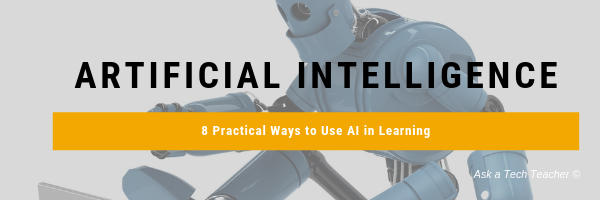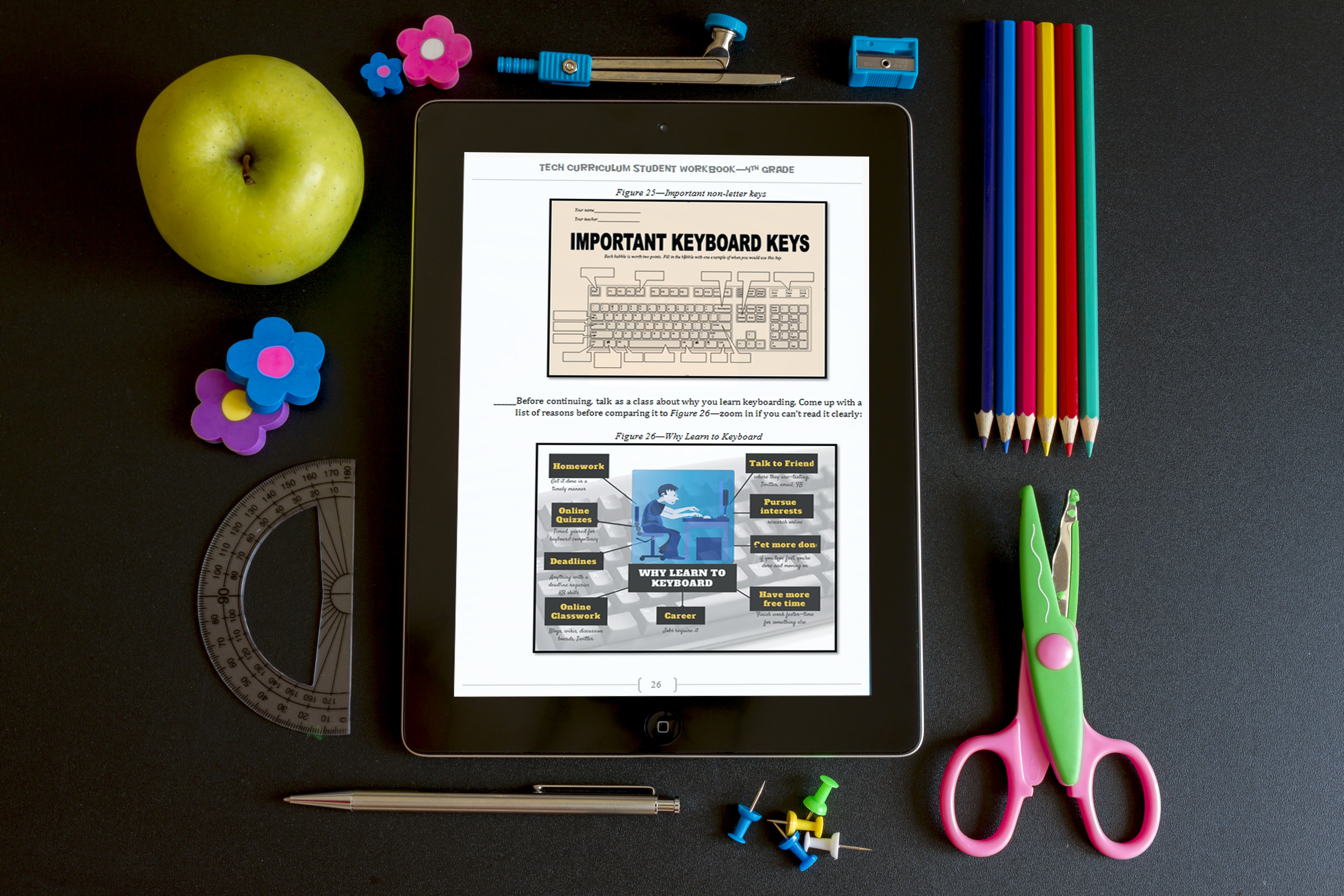Every year, education finds new ways to make learning more inclusive and diversified. The latest change agent is Artificial Intelligence (AI), now being used in classes to focus learning, simplify redundant tasks, and infuse lesson plans. Ask a Tech Teacher contributor, Kamy Anderson has eight practical ways to use AI in learning:
Artificial intelligence (AI) is disrupting the education industry. Traditional classrooms may not go extinct anytime soon, but edtech will certainly change the way we learn and think about learning. It’s already challenging us, as educators, to revisit our role as sole providers of formal knowledge and professional L&D. And we must admit, AI is making things better and easier.
These are the eight practical ways to use AI in learning:
1. Smarter Content
The primary ability of AI is to collect and analyze data. Not only is this technology designed to sift through massive amounts of information but it is also ingrained with powerful curation capabilities. As a result, AI helps create smart educational content that’s being used in both classrooms and online courses. Using AI, we can deliver textbooks, lesson summaries, and flashcards that are highly focused, relevant, and applicable. Moreover, AI-empowered edtech can keep updating content with the latest findings from leading academic researchers and scientists.
2. Videos and Tutorials
As an authoring tool, AI goes beyond textbooks and traditional studying guides. After all, this is the age of digital content and interactive mediums. It is only natural that this cutting-edge technology can create videos, infographics, and slideshows for learning purposes.
3. Gamification
We’ve long struggled with ways to motivate students and keep them engaged during classroom lectures and online courses. Gamification seems to be one of the most effective approaches we could find, but it wasn’t until AI that we could unlock its full potential. Today, AI-based VR technology allows us to emulate real-life scenarios and create immersive learning experiences. As a part of experiential learning, gamification boosts not only engagement but also retention level of learners. Potential applications of AI are unlimited in this context.
4. Personalized Learning
Then again, not all students thrive on gamification. Learning styles, behaviors, and habits have become more diverse. The one-size-fits-all approach doesn’t suffice anymore, with the eLearning environment growing more inclusive and capable of catering to different, highly specific needs of individual students. And thanks to AI, it’s all because of its ability to monitor and learn. Especially in terms of online courses, we can now speak of self-paced, personalized learning paths based on individual interests, ambitions, and requirements. Without AI, this level of individualization would hardly be achievable in learning environments.
5. Digital Mentorship
AI relies on machine learning (ML) algorithms and natural language processing (NLP). Taken together, these two capabilities enable chatbots and other digital assistants to communicate with students and provide real-time guidance and support 24/7 across all devices. Chatbots can answer students’ questions, provide explanations to abstract concepts, and forward learning materials on demand. This way, points of confusion can be addressed and resolved the moment they occur, enabling successful knowledge acquisition.
6. Continual L&D
Organizations can leverage AI for professional L&D too. In both on-boarding and employee training programs, edtech can help businesses reduce learning times and turnover rates. More importantly, AI enables continual learning and development based on role requirements as opposed to traditional training.
7. Automated Grading
AI helps automate administration across the industry beyond everyday routine tasks. We’ve already mentioned how this technology can optimize the content creation process by researching, curating, and updating learning materials, but that’s certainly not all. Let’s take online assessment tests as an example. Artificial intelligence can automate grading in online courses too, though this capability is currently limited to multiple-choice tests. Soon enough, AI will also be able to assess written responses. With that, assessments will be fully automated and error-free.
8. Real-Time Tracking
Many current benefits of educational AI would not be possible without this technology’s unique ability to track and analyze student progress in real time. This enables us to provide personalized guidance to students, as well as detect knowledge gaps. Consider the many implications of this functionality. By analyzing students’ key performance indicators, AI can give real-time recommendations of what needs to be improved and in which direction individual learning paths should develop. Using this insight, we can keep maximizing their performance indefinitely.
At the same time, we can gain a deeper understanding of the students’ needs and pain points and adjust our courses accordingly. It’s not hard to see how this capability can play a crucial role in the further development of teaching techniques and educational institutions.
 ***
***
Whether we like it or not, AI will transfor m the global learning environment as we know it. The only thing we can do about it is to embrace the change and reap the benefits. Luckily for our students, they will make education more personalized, engaging, and effective.
Author Bio
Kamy Anderson is an ed-tech enthusiast with a passion for writing on emerging technologies in the areas of corporate training and education. He is an expert in learning management system & eLearning authoring tools – currently associated with ProProfs Training Maker.
More on education reform
10 Myths about Teaching with Tech
3 Book Reviews about Anthropomorphized Computers
Jacqui Murray has been teaching K-18 technology for 30 years. She is the editor/author of over a hundred tech ed resources including a K-12 technology curriculum, K-8 keyboard curriculum, K-8 Digital Citizenship curriculum. She is an adjunct professor in tech ed, Master Teacher, webmaster for four blogs, an Amazon Vine Voice, CSTA presentation reviewer, freelance journalist on tech ed topics, contributor to NEA Today, and author of the tech thrillers, To Hunt a Sub and Twenty-four Days. You can find her resources at Structured Learning.





































